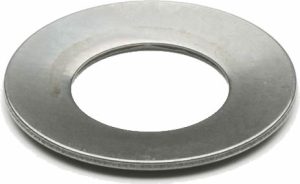
When shopping for springs, you may come across bearing disc springs. They don’t feature the same coil design as extension and compression springs. Bearing disc springs are still able to store mechanical energy under a load, but they feature a design similar to that of a traditional washer. What are bearing disc springs exactly?
The Basics of Bearing Disc Springs
Bearing disc springs are cupped, ring-shaped springs that are designed for use with ball bearings. Also known as conical spring washers and disc springs, they consist of a circular piece of metal with a hole in the center.
How Bearing Disc Springs Work
When placed against a ball bearing, bearing disc springs will stabilize and support them. The mechanics of bearing disc springs can be attributed to their unique shape. Bearing disc springs aren’t entirely flat. Rather, they are cupped. This cupped design allows them to bend flat when exposed to a load.
As a bearing disc spring presses against a ball bearing, it will begin to flatten out. It will deform while transitioning from a cupped shape to a flat shape. Once flattened, the bearing disc spring will store the mechanical energy of the load to which it’s exposed. At the same time, it will exert an equal amount of force on the adjacent ball bearing, thereby stabilizing and supporting the ball bearing.
Benefits of Bearing Disc Spring
Bearing disc springs can protect ball bearings from premature wear and tear. When ball bearings have too much play, they may wear down quickly. Bearing disc springs offer a solution. They limit play by exerting a consistent and continuous force on ball bearings.
You can use bearing disc springs to eliminate noise and vibrations. Ball bearings, of course, are often found on machinery. Machines with rotating shafts may feature one or more ball bearings to reduce friction and improve their performance. Machinery, though, is prone to noise and vibrations. Bearing disc springs can suppress noise and vibrations by stabilizing the ball bearings with which they are used.
How to Choose a Bearing Disc Spring
You should consider the load rating when choosing a bearing disc spring. Some bearing disc springs are rated for just 6 pounds, whereas others are rated for nearly 200 pounds.
One of the most important things to consider when choosing a bearing disc spring is the size. Since they are designed for use with ball bearings, you’ll need to choose a size that’s compatible with the respective shaft diameter.
Don’t forget to check the material when choosing a bearing disc spring. While they are all made of metal, the specific type of metal from which a bearing disc spring is made may vary. Some of them are made of stainless steel, whereas others are made of carbon steel.
